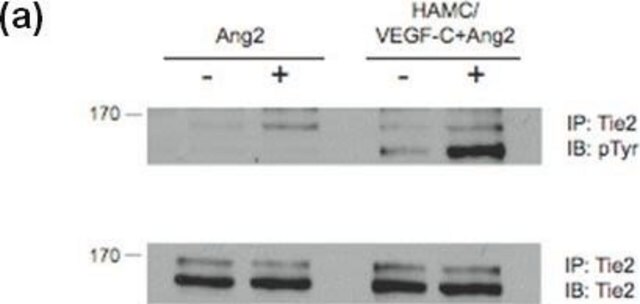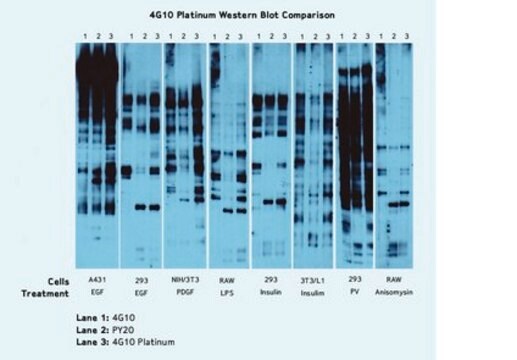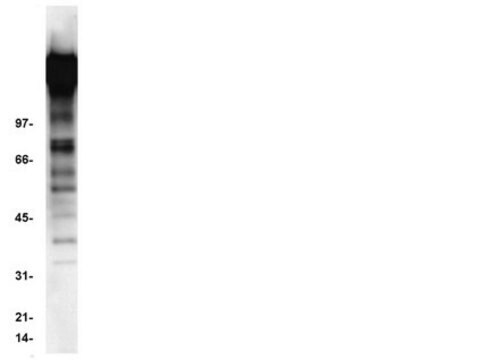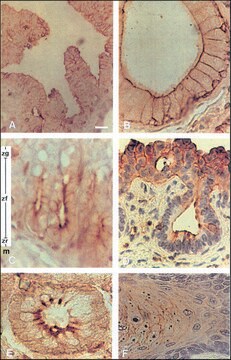16-638
4G10® Platinum, Anti-Phosphotyrosine Antibody, Agarose Conjugate
clone 4G10®, Upstate®, from mouse
Synonym(s):
4G10 Platinum Anti-Phosphotyrosine, 4G10 Platinum Antibody, Phosphotyrosine Detection Antibody
About This Item
Recommended Products
biological source
mouse
Quality Level
antibody product type
primary antibodies
clone
4G10®, monoclonal
species reactivity (predicted by homology)
all
manufacturer/tradename
Upstate®
technique(s)
immunoprecipitation (IP): suitable
isotype
IgG2bκ
shipped in
wet ice
target post-translational modification
phosphorylation (pTyr)
Gene Information
human ... PID1(55022)
General description
Immunogen
Application
Features and Benefits
Quality
Twenty μl of 50% slurry of this reagent (10 μl packed beads) was used to immunoprecipitate tyrosine-phosphorylated proteins from 250 μg PDGF-stimulated NIH3T3 cell lysate or EGF-stimulated A431 cell lysate.
Target description
Physical form
Storage and Stability
NOTE: DO NOT FREEZE.
Legal Information
Not finding the right product?
Try our Product Selector Tool.
Storage Class Code
10 - Combustible liquids
WGK
WGK 2
Certificates of Analysis (COA)
Search for Certificates of Analysis (COA) by entering the products Lot/Batch Number. Lot and Batch Numbers can be found on a product’s label following the words ‘Lot’ or ‘Batch’.
Already Own This Product?
Find documentation for the products that you have recently purchased in the Document Library.
Our team of scientists has experience in all areas of research including Life Science, Material Science, Chemical Synthesis, Chromatography, Analytical and many others.
Contact Technical Service







